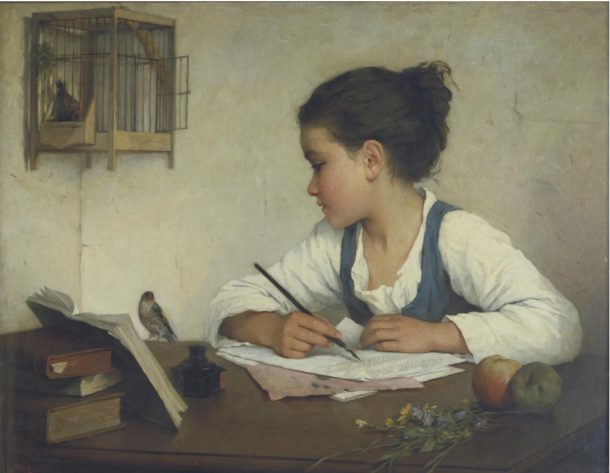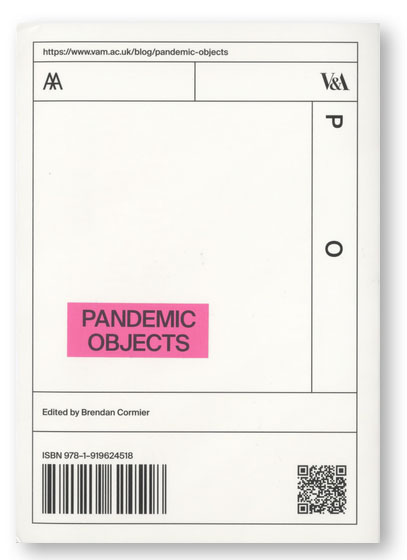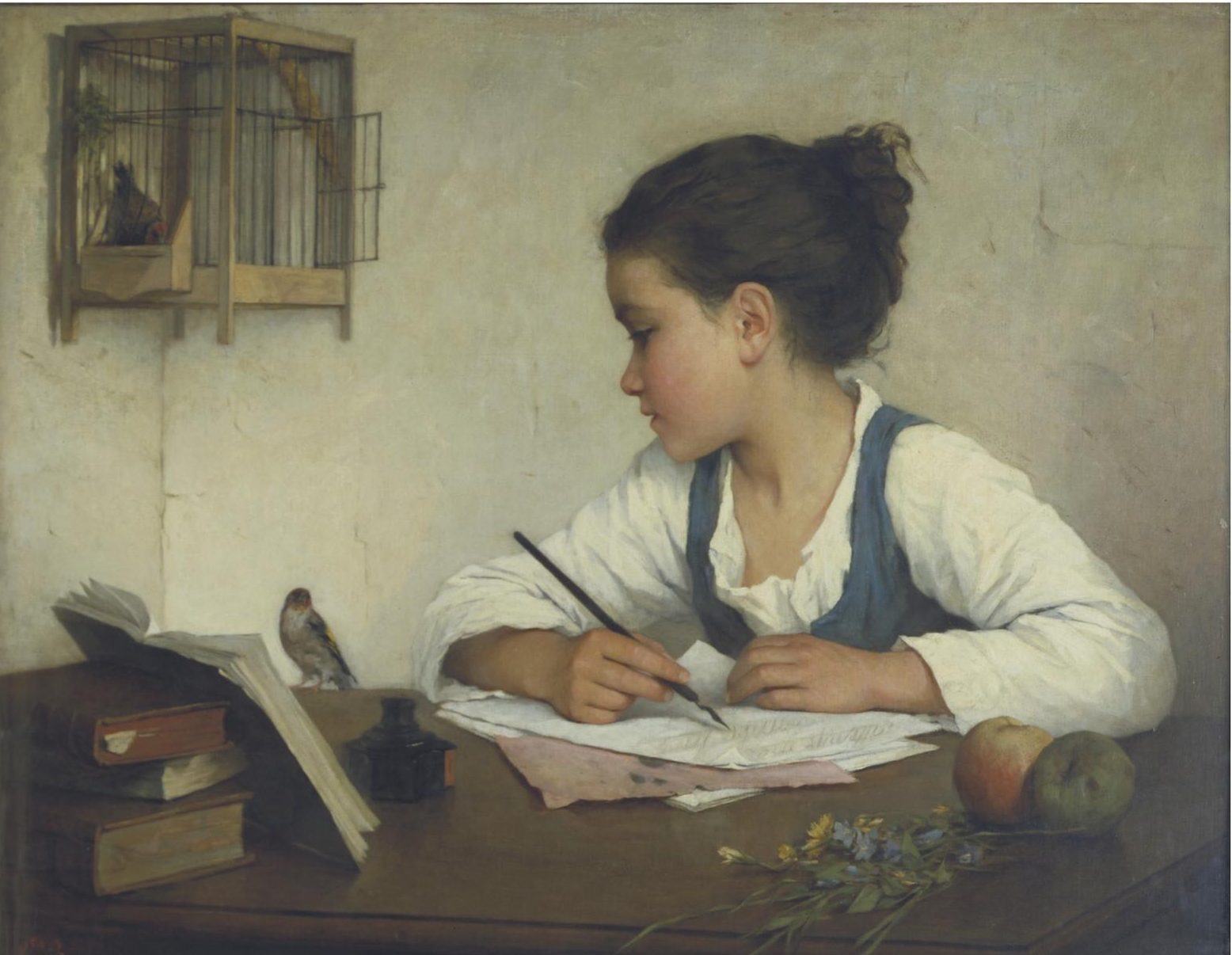Summer holidays are here. Allegedly. For young people the rhythm of their days will have changed to a variable degree, depending on factors including the extent to which their school and home environments, respectively digital and real, were able to support home learning during lockdown. Research by UCL Institute of Education tells us that one in five pupils spent less than an hour a day on study in the lockdown period. This equates to approximately two million – yes, two million – children in the UK doing almost no schoolwork at home. It includes those young people due to take GCSE and A level exams, many of whom received no structured learning at all over lockdown and were pretty much left to their own devices. The untaken exam becomes a most curious pandemic object: held in apprehension by many in the pre lockdown period – but now sorely missed. Like-wise the unopened exercise or text book, given “most homework consisted of assignments, worksheets and watching videos” (UCL report). Research underlines the divisive nature of education in lockdown with inequalities on provision writ large between the private and state sector – 31% of private schools provided four or more online lessons daily, compared with just 6% of state schools. There is an opportunity here for the museum sector in supporting schools with ‘recovery curricula’ which ensure that pupils receive a broad and enriching education on return in September. Such an education retains creativity as core and doesn’t push imagination to the margins. V&A Learning is prioritising this with V&A Innovate, a digital first, design-led National Schools Challenge and online hub for secondary schools that invites young people to step into the shoes of designers and work collaboratively to design solutions to real-world problems. Challenge themes for the school year ahead are Home and Community: never more important than during this pandemic.
Thinking more broadly about learning – or lack of – during lockdown, there may be a positive side to the impact of the great swathes of time afforded to children if we look beyond a narrow focus on education. What about the benefits of more time to play, to daydream, to read, to be bored and to fathom your own entertainment? A research project is currently being scoped into the nature of ‘pandemic play’ by UCL in partnership with the V&A Museum of Childhood, the British Library and Great Ormond Street Hospital. We don’t yet know the nature, scope and impact of such play besides perhaps what we may have observed in our own families and close communities.
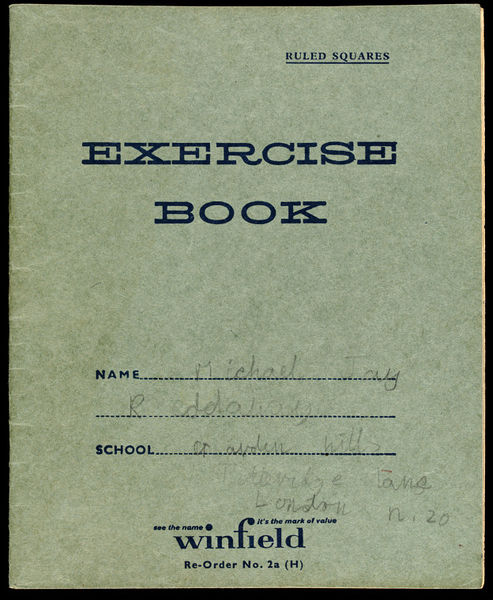
In this vein, two V&A collection pieces spring to mind. The first is the Reddaway exercise book in the V&A Museum of Childhood. The collection record for this unassuming green exercise book tells us it is part of a set of three produced by two brothers during the 1960s. The books contain information about an extensive imaginary monkey world that they created during their school holidays. The books have details about day-to-day life in monkey society, including political struggles, religious views, schooling and tests, cultural events, and the monkey justice system which featured fines and punishments for bad behaviour. Accompanying the books are the monkeys themselves which were homemade by a live-in teacher who resided with the family while the boys were growing up .
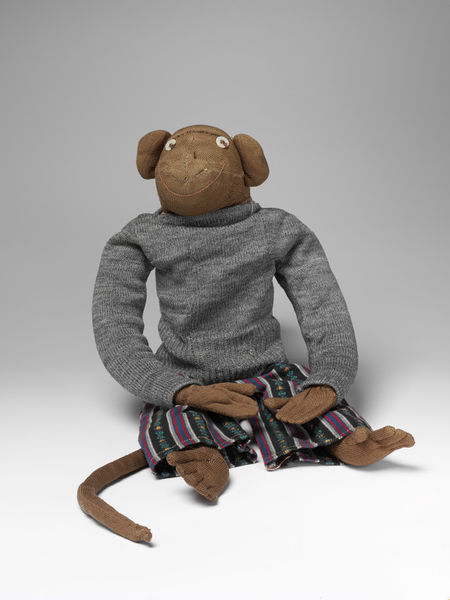
Here’s one of the Reddaway monkey family: meet ‘Ando’. He was made in England in the 1960s out of a pair of stockings. He wears a grey knitted jumper and a rather natty pair of multi-coloured striped trousers with an elasticated waist. He sports a puzzled expression which could just as well pertain to the bemusement felt by many children (and parents, let’s face it) at the experience of home-schooling during lockdown.
The books and the monkeys give a very unusual insight into the thoughts and concerns of teenage boys in the 1960s. The world they have created is complex in its political and moral structures, showing evidence of wider cultural influences. The books capture the inner workings of imaginative play, something that is usually intangible and difficult to record, making the objects exciting and important records of modern childhood. The research scoped by UCL and partners will do likewise as a contemporary record of play during the pandemic. From a developmental psychology perspective, imaginary friends/companions and ‘paracosms’ (imaginary societies and universes – think Star Wars) are a critical component in fostering the development of a theory of mind – the understanding of self and of others – which is a vital skill for a social species. Psychologist and Professor Emerita at the University of Oregon Marjorie Taylor studies imaginary friends/companions across the 2-6 year old age range. Her work provides fascinating insights into how children across this life stage begin to create a map of the mind and to understand connections between emotions and actions. So the day-dreaming time afforded to children throughout lockdown may well have benefitted children in ways that complement or even act as a counterpoint to structured learning.
The second collection piece that comes to mind in thinking of the untaken exam and all the revision that didn’t happen, the exercise books and text books that remained unopened – is a beautiful terracotta sketch for a study by Dalou. Full disclosure – it’s one of my favourite pieces on display at South Kensington. An unassuming work, the figure is seated in a light chair, wearing a long full peignoir, arms folded across her chest. In her right hand she holds an open book which she is reading. Her whole body is twisted slightly to the left as if to catch the light on the book. We don’t know what she is reading but whatever it is, she is utterly absorbed.
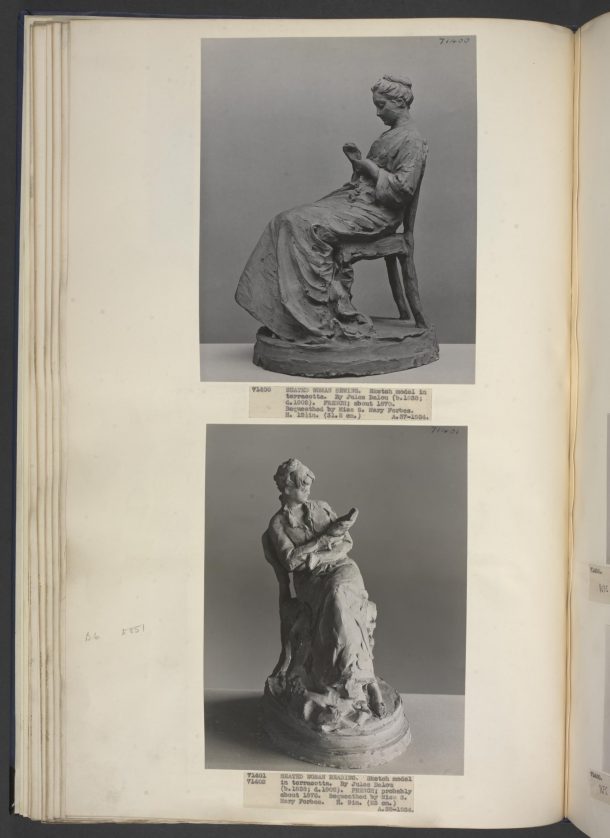
The stillness of the Dalou sketch reminds me of the stillness of lockdown and of that of my teens as they had time simply to sprawl on the carpet, the sofa, the grass, at the top of the stairs, wherever their wanderings took them in the prolonged downtime moments of lockdown, sometimes with a book in hand, at others simply with their thoughts. It will be intriguing to find out through the UCL and partner research how children describe and account for their experiences of play during the pandemic. Perhaps freedom from some of the exigencies of the school day may have set imaginations soaring. Perhaps somewhere there are contemporary companion pieces to the Reddaway monkeys, dressed just as smartly and, perhaps, looking equally askance at the experience of lockdown.
Related Objects from the Collections:
‘A Girl Writing’ (oil painting), Henriette Brown, France, c.1870 (1083-1886)
